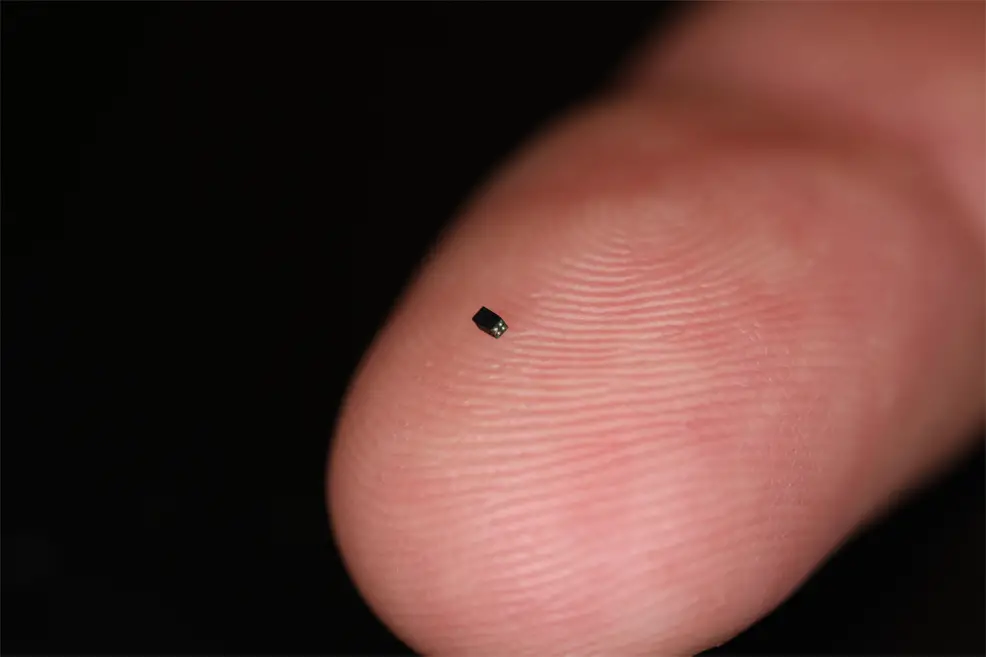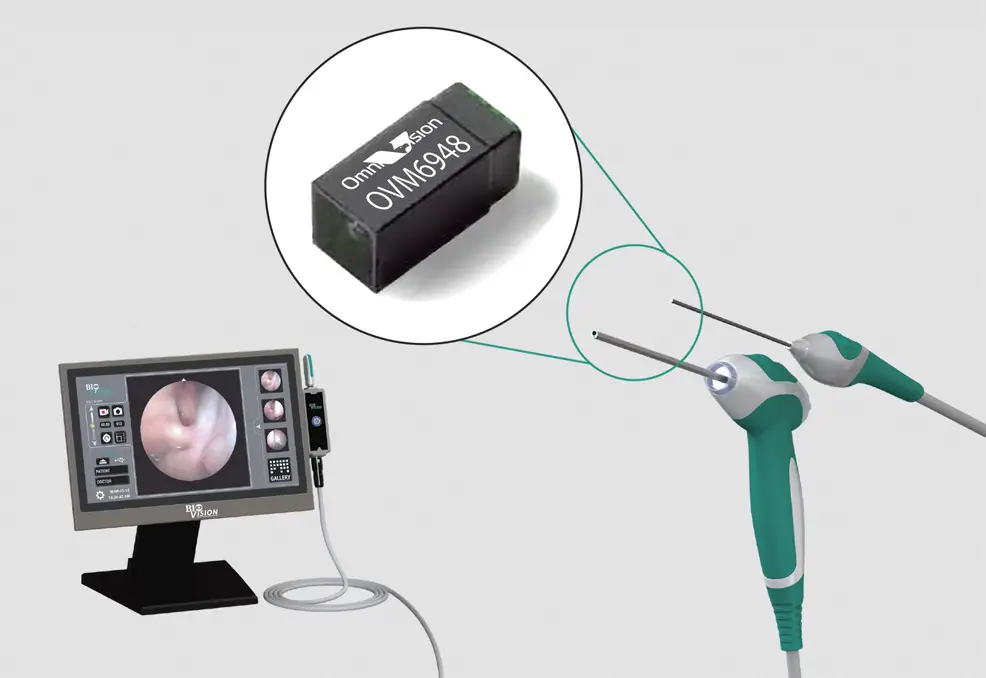
27th October 2019 World's smallest image sensor is just half a millimetre wide OmniVision Technologies, a leading developer of advanced digital imaging solutions, has announced that its OV6948 product is the winner of the Guinness World Record for "Smallest Image Sensor Commercially Available" with a size of 0.575 mm x 0.575 mm. The OV6948 has a 1/36-inch optical format and image array capable of capturing 40 Kpixel (200x200) resolution video at up to 30 frames per second (fps). Exceptional low-light sensitivity is provided at 1000 mV/lux-sec, and using OmniVision's proprietary sensor technology, this delivers excellent image quality in terms of colour fidelity, sharpness and low noise.
Derived from this ultra-small imager, the company also announced its OVM6948 CameraCubeChip – a fully packaged, wafer-level camera module that measures just 0.65 mm x 0.65 mm, with a z-height of 1.158 mm. OmniVision has developed these innovative devices for use in medical imaging, and to address the market demand for decreased invasiveness and deeper anatomical access. A complete module can be integrated into a catheter or endoscope with a diameter as small as 1.0 mm. With its tiny dimensions and relatively high resolution, combined with backside illumination, high quality images can be captured from within the body's narrowest blood vessels for arthroscopy, cardiac, ENT, gynaecology, neuro, ophthalmic, spinal, and urology procedures. Many space-constrained dental, veterinarian and industrial applications can also benefit from the product's advanced design. Additionally, these imagers can address the many challenges posed by reusable medical imaging equipment, including cross-contamination risks and inefficiencies due to high maintenance costs. "We expect disposable endoscope shipments to grow at a 35.9% CAGR over the next five years," commented Marjorie Villien, PhD, a medical technology and market analyst at Yole Développement. "This industry is today driven by the recent recommendation from the US Food and Drug Administration related to the cross-contamination issues due to improper cleaning of the endoscopes. In this context, all major endoscope OEMs are developing cost-effective, small-diameter disposable endoscopes with high image quality."
Other key features of this camera module include a wide 120-degree field of view and extended focus range of 3 mm to 30 mm. Its analogue output can transmit over 4 m (13 ft) with minimal signal noise. The camera also offers low power consumption of 25 mW, generating less heat for better patient comfort and flexible procedure durations. "Previously, procedures in the body's smallest anatomy were performed either blind or using low quality images from fiberscopes, as existing cameras were too big and reusable endoscopes were not cost effective," said Aaron Chiang, Marketing Director at OmniVision. "The OVM6948 wafer-level camera module offers a compact, high quality solution for disposable guidewires, catheters and endoscopes, which are experiencing growing demand because of their ability to reduce cross-contamination risks, downtime inefficiencies and costs associated with repairs, preprocedural testing and sterilisation of reusable endoscopes. In addition, these compact disposable medical devices can improve patient comfort and shorten recovery time." OmniVision's new products are a reminder of the astonishing progress in technology miniaturisation. If the current trend in component sizes continues into the long term, nano-scale cameras and other such devices could emerge within a few decades – perhaps attached to nanorobots – able to probe the body and reveal its workings in unprecedented detail. On the flip side, imaging technology at such tiny scales will be cause for privacy and security concerns. Imagine being observed by cameras in the surrounding environment that are literally too small to spot with the naked eye.
Comments »
If you enjoyed this article, please consider sharing it:
|








